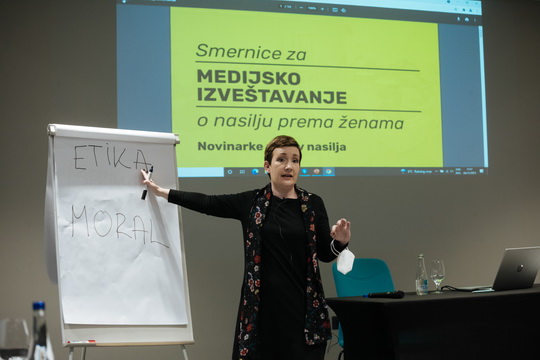Guidelines
Analysis of media reporting indicates that the media coverage of violence against women by men, and its most brutal form – murder, is increasingly more tabloid-like and scandalous in its style, every year involving less and less journalistic research. Such analysis led to the engagement of members of the group Journalists against Violence against Women in the development of Guidelines for media reporting on violence against women, which were written with the intention of being applicable and useful to all outlets of media: print, electronic, and digital. They address all journalist and editorial dilemmas that could be foreseen in regard to reporting on domestic violence, violence against women and children, and intimate partner violence, as well as on the specifics of violence against certain groups of women, such as minors, Roma women, women with disabilities, and the like. The first edition of the Guidelines was prepared in 2019, while a revised edition was published in 2021.
The members of the Group prepared these guidelines to assist journalists in all segments of their work – from behaviour in the field and on the scene of a case, through attitudes towards victims of violence and direct and indirect witnesses, to the selection of interlocutors and the identification of relevant institutions that should be held accountable, as well as in choosing precise formulations that could be used in writing the text of reports and formulating titles. All guidelines have been carefully designed to be in accordance with the Code of Journalists of Serbia, the document which served as the basis for their development. The aim of the Guidelines is – on the one hand – to improve the quality of reporting on this topic and help resolve dilemmas that journalists who report on this issue often encounter, but also to eliminate, or at the very least reduce the level of, the traumatization of women who’ve experienced violence, especially that which occurs as a consequence of public exposure.
